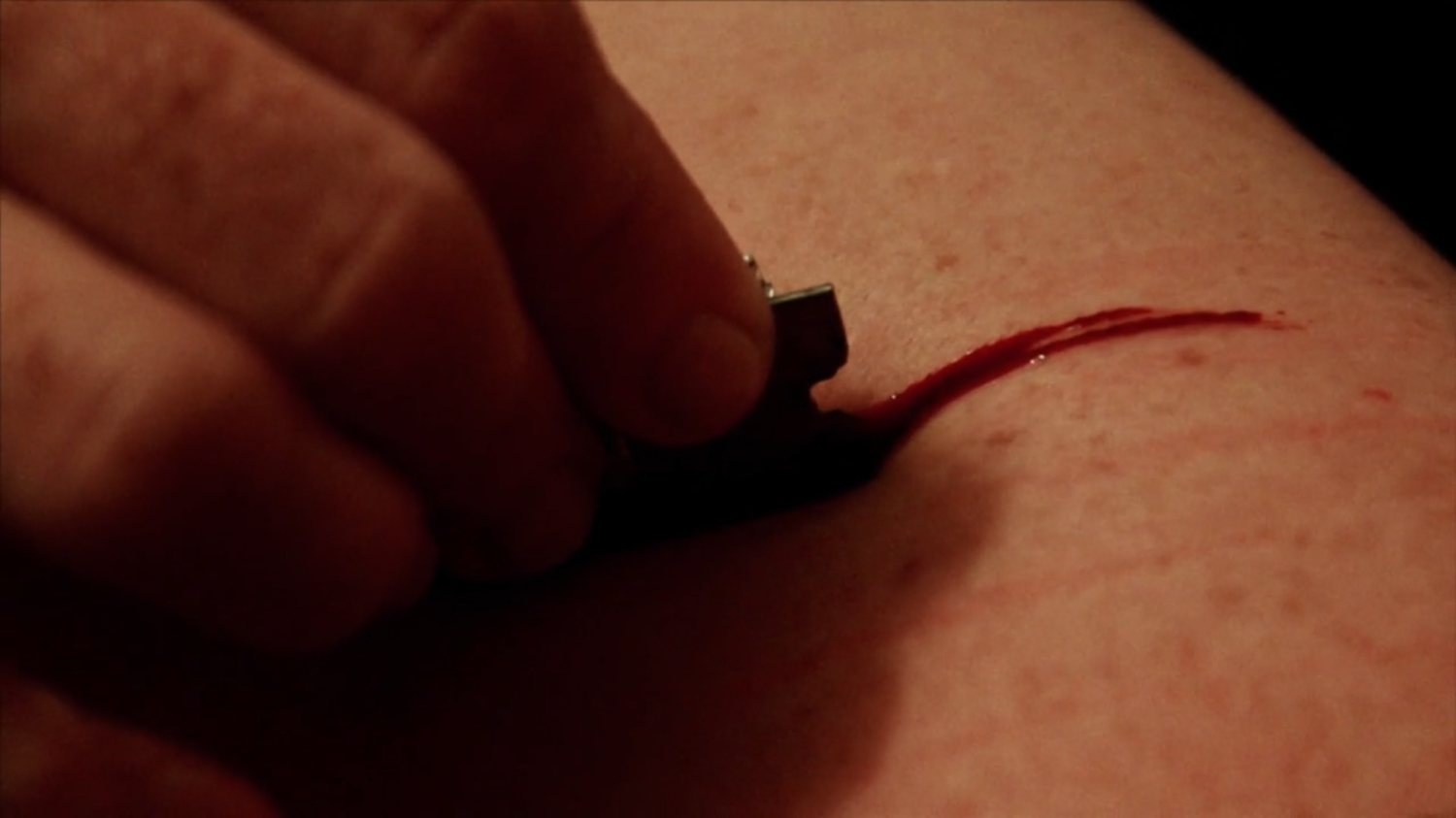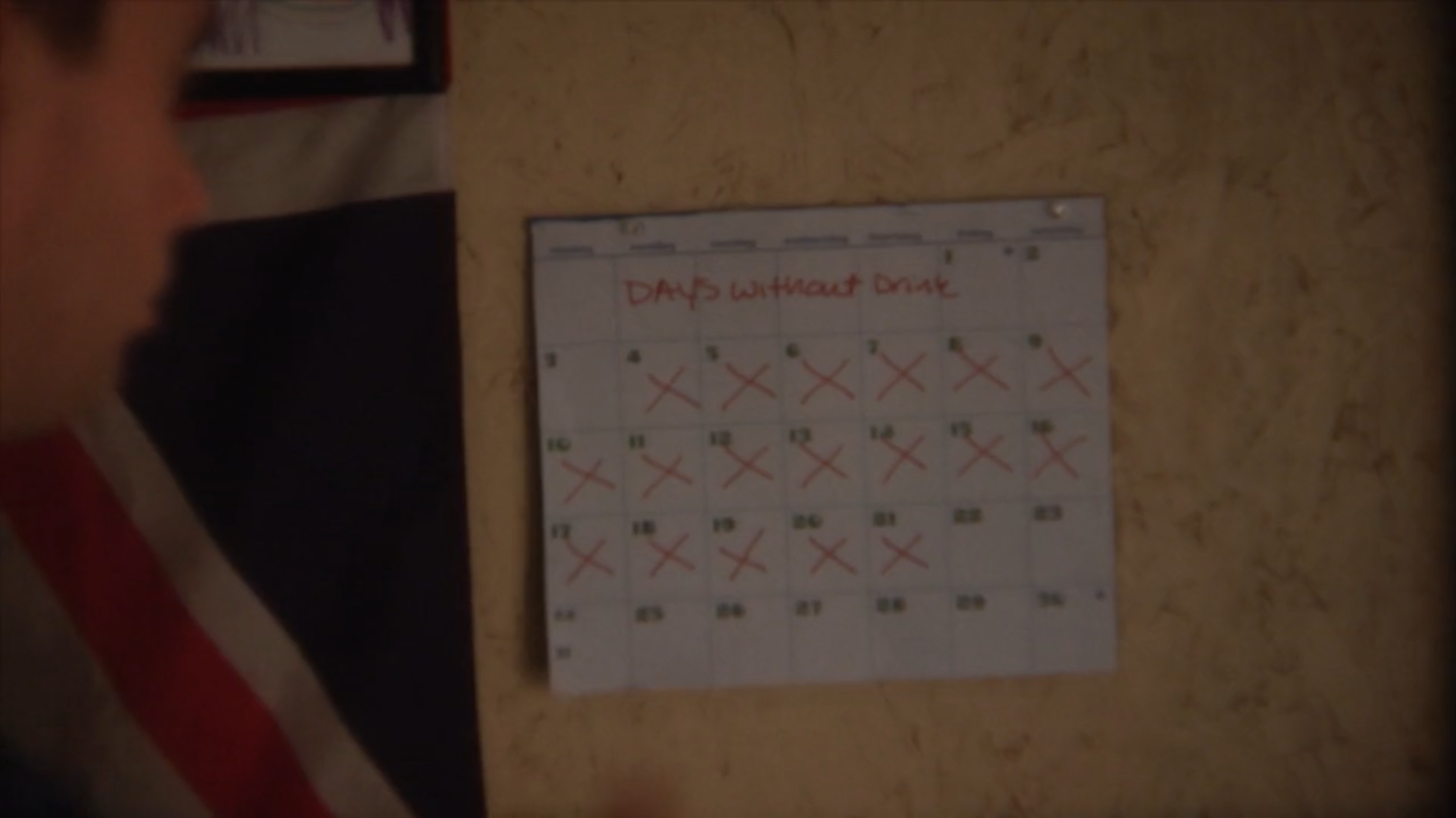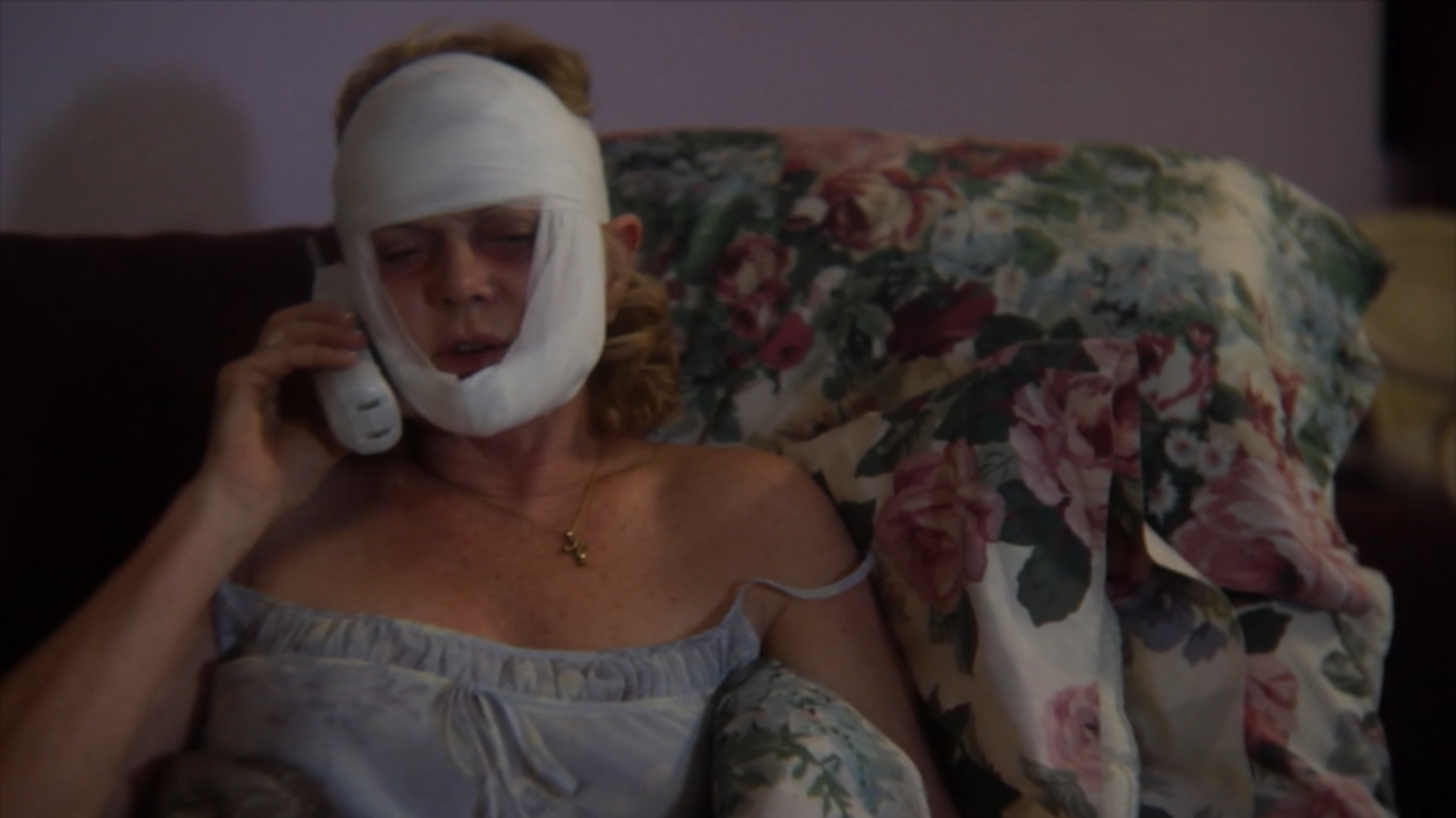

The theory of social learning “states that an individual’s behavior is shaped by their social world” (Raymond, 2012). Someone’s social world can consist of friends, family, co-workers etc, but also of the media consumed. This theory could apply to non-suicidal self-injury (NSSI) and some research suggest a correlation between the alleged rise in rates of NSSI and the increasing depiction of self-harm in the media, suggesting that self-harm seen in movies could be learnt and imitated. Yet, if this theory is valid, “accurate portrayals of NSSI may also have a positive therapeutic utility” (Trewavas, Hasking, & McAllister, 2010) in cases where the character is shown seeking help for example. But these researchers found that NSSI is often sensationalized, romanticized or over-dramatized in movies. Depending on the way self-harm is represented in movies, cinema might either perpetuate the stigma surrounding NSSI, maybe even aggravate it, or reduce it.
The 2012 independent movie Perfection directed by Christina Beck aimed at reducing the stigma surrounding self-harm. It is the long version of Slice, a short movie about self-harm also directed by Beck. Christina Beck, who suffered from a form of self-harm, explained her goal in her director’s statement:
While also stating that Perfection is “a narrative feature film, not a PSA” (Beck, 2012), she acknowledges that movies can have an impact on the perception of self-harm in society.
Kristabelle is a woman in her thirties who still lives with her mother. She has trouble building a social life, suffers from a childhood trauma, from low self-love and self-acceptance and cuts herself to regulate her emotions. Her mother, who is from a generation when women were only judged on their beauty, is similarly obsessed by her appearance and refuse to grow-old to the point that she does one plastic surgery after another. Throughout the movie, Kristabelle starts a journey through recovery and self-acceptance and falls in love with Simon, an English-comic who is himself recovering for alcoholism. Therefore, Perfection is a movie about addictions, the pressure that women feels to be “perfect” and their path to self-acceptance.
This movie is a drama and a comedy. As we have seen, movie depictions of self-harm are often sensationalized. Yet in Perfection, NSSI is represented accurately and is not romanticized nor over-dramatized, despite being one of the main themes of the movie. It is represented several times on screen but never in a gratuitously graphic way and Kristabelle’s scars are visible throughout the movie (Figures 1 and 2). The method used by Kristabelle to self-harm is cutting which is the most known form of self-harm. She self-harms to release tension, to regulate her emotions such as her sadness.
 |
 |
| Figure 1 - A graphic depiction of cutting | Figure 2 - Some of Kristabelle's scars are visible on her arm |
Self-harm is often assumed to be an almost exclusively female behavior but the prevalence of female self-harmers is discussed. Some studies find that most self-harmers are female, while others find no significant gender difference. Therefore, Perfection is not inaccurate regarding the gender of the main character even if it might unintentionally contribute to the idea that self-harm is a female disorder only. But it is important to remember that while cinema as a whole should be inclusive, that is everyone’s story should be told, a movie cannot, nor should, represent everyone. By being too inclusive, a movie would fail to represent anyone. Christina Beck chose to tell the story of women who self-harm and who have self-acceptance difficulties: “My commitment was to support these other women by telling their stories in one character that could show the pain and private suffering along with the hope of getting to the other side of it” (Beck, 2012). As a female cutter, Kristabelle seems to be a standard self-harmer. But as an adult self-harmer, she is part of a category that is very rarely talked about. “This behavior however, is not limited to youth, there are many older women and men who suffer in silence and even less information is discussed and known about them due to shame and unresolved issues” (Beck, Director’s statement, 2011).
Therefore, Beck’s movie can help raising awareness by helping the public understand NSSI. “[I]t is reasonable to say that the cinema has the potential to shape society’s knowledge about Non-Suicidal Self-Injury” (Raymond, 2012). Self-harm is often not understood by the general public. Movies, by encouraging the viewer to empathize with characters, might help understand a behavior, its causes and motives and reduce the stigma surrounding this behavior. In one scene, a man who once had sex with Kristabelle tells Simon that she has a “great body” but advises him to “watch out for the scabs”. If the viewer empathizes with Kristabelle, he or she might be shocked by such a stigmatizing attitude and feels similarly shocked if confronted to the stigma in real life. “I think even if you’re not someone who cuts yourself you can relate, hopefully, to the feelings,” explained Christina Beck. “For me, I always think that filmmaking is such a powerful medium, that we can observe behavior, follow a story, hopefully, and connect with a protagonist, and go on that journey” (Perrone, 2018).
Moreover, other forms of self-destructive behaviors are shown in the movie, such as Simon’s alcoholism and the mother’s plastic surgeries to cope with her denial to age (Figures 3 and 4). Self-harm may be easier to understand as another coping mechanism when associated to more socially accepted behaviors. As Beck explained, “I personally feel that both forms [plastic surgery and self-harm] stem from a misperception of self, and in public or private, I believe true healing has to come from within” (Beck, 2012).
 |
 |
| Figures 3 and 4 - Alcoholism and plastic surgery as other forms of self-destructive behaviors | |
Finally, this movie does not only inform the public about NSSI but could also help people who suffer from it by showing Kristabelle’s journey through recovery.
In Perfection, Kristabelle seeks help by seeing an acupuncturist and she spends some time in hospital at some point, although it does not seem to be helpful. She also finds healthier coping mechanism (Figures 5 and 6) as she writes her feelings in a diary, resumes her studies, spends time with a friend and starts a love affair with Simon. In the end of the movie, Kristabelle has not fully recovered yet but is on the path to self-acceptance and she seems to be happier. The message might have been more effective if Kristabelle had gotten help thanks to a recognized professional help such as a therapy instead of a pseudoscience but the movie nevertheless gives hope by depicting self-harm as a curable behavior and showing that self-acceptance can be achieved, even if it is a difficult process. As Beck explained, “[i]n 85 minutes, it’s really hard to wrap up someone’s whole recovery”. “It just wouldn’t be truthful. And so we kind of modified that journey to leave with a sense of hope.” Research finds that such a positive message could have an impact on people who self-harms. “Films that feature NSSI could be even more powerful if they included a discourse of hope and recovery” (Trewavas, Hasking, & McAllister, 2010).
 |
 |
| Figures 5 and 6 - Writing and studying as healthier coping mechanisms | |
Perfection shows us that movies can be a powerful tool to raise awareness of self-harm and mental health. Fiction enables the viewer to empathize with characters who suffer from this disorder. More movies depicting NSSI in an accurate and not sensationalized way are needed to help reduce the stigma and create discussion about self-harm. Christina Beck understood the therapeutic utility of cinema and her movie was screened in honor of Self-Injury Awareness Day with a panel of therapists and was also screened in treatment centers and women’s groups. Information about self-harm can also be read on the movie’s website. Unfortunately, Perfection is not known enough and deserves to be seen by more people.
Beck, C. (2011). Director’s statement. In Perfection Pressbook.
Beck, C. (2012, January 16). PERFECTION: Interview with filmmaker Christina Beck. (H. Film, Interviewer) Retrieved from https://her-film.com/2012/01/16/christina-beck/
Perrone, J. J. (2018, June 27). Christina Beck Brings Perfection to New York Film Academy Los Angeles Guest Speaker Series. Retrieved from New York Film Academy Blog: https://www.nyfa.edu/film-school-blog/christina-beck-brings-perfection-to-new-york-film-academy-los-angeles-guest-speaker-series/
Raymond, C. M. (2012). Non-Suicidal Self-Injury: The Movie Industry’s Influence on Its Stigma. McNair Scholars Research Journal, 5(1), pp. 147-166.
Trewavas, C., Hasking, P., & McAllister, M. (2010). Representations of Non-Suicidal Self-Injury in Motion Pictures. Archives of Suicide Research, pp. 89-103.